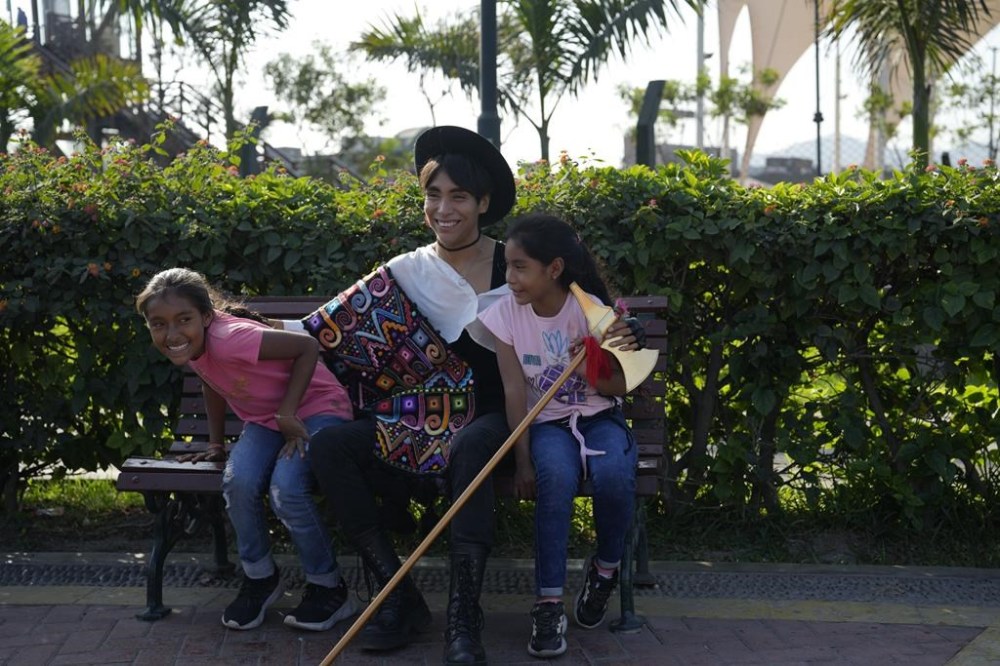Q-Pop: Peru’s social media phenomenon Lenin Tamayo fuses Quechua and K-pop
Advertisement
Read this article for free:
or
Already have an account? Log in here »
To continue reading, please subscribe:
Monthly Digital Subscription
$0 for the first 4 weeks*
- Enjoy unlimited reading on winnipegfreepress.com
- Read the E-Edition, our digital replica newspaper
- Access News Break, our award-winning app
- Play interactive puzzles
*No charge for 4 weeks then price increases to the regular rate of $19.00 plus GST every four weeks. Offer available to new and qualified returning subscribers only. Cancel any time.
Monthly Digital Subscription
$4.75/week*
- Enjoy unlimited reading on winnipegfreepress.com
- Read the E-Edition, our digital replica newspaper
- Access News Break, our award-winning app
- Play interactive puzzles
*Billed as $19 plus GST every four weeks. Cancel any time.
To continue reading, please subscribe:
Add Free Press access to your Brandon Sun subscription for only an additional
$1 for the first 4 weeks*
*Your next subscription payment will increase by $1.00 and you will be charged $16.99 plus GST for four weeks. After four weeks, your payment will increase to $23.99 plus GST every four weeks.
Read unlimited articles for free today:
or
Already have an account? Log in here »
Hey there, time traveller!
This article was published 11/08/2023 (812 days ago), so information in it may no longer be current.
LIMA, Peru (AP) — What happens when you take Quechua, the most widely spoken Indigenous language in the Americas, and fuse it with K-pop, the global musical sensation with roots in South Korea?
Ask Lenin Tamayo, who has become a social media phenomenon with “Q-pop” and released his first digital album this week.
Tamayo grew up listening to his mother, a Peruvian folk artist who sings in Spanish and Quechua, a language shared by 10 million speakers in countries including Peru, Ecuador, Colombia, Brazil, Bolivia, Argentina and Chile. As a teenager, K-pop became his passion and helped him find a group of like-minded female classmates who helped fight the bullying he says he faced at school for his Indigenous looks.

Now himself a musician, the 23-year-old Tamayo has fused those chapters, mixing Spanish and Quechua lyrics with K-pop beats to create Q-pop (in which the “Q” stands for “Quechua”). He’s amassed more than 4.4 million likes on his TikTok account and released five digital singles online.
Making music in his native language “helps embrace the roots but, without being oblivious to modernity and globalization,” he told The Associated Press in a recent interview.
For Tamayo, the K-pop aesthetic helped influence a personal style where he mixes his own choreography and a way of acting that helps reinforce a key message: Love and freedom.
“Love to unite people and the freedom to be oneself, because it’s all about embracing existence and seeking a full, full, real life, with depth,” he says.
After completing his psychology studies at the Universidad Nacional Mayor de San Marcos, Tamayo could not picture himself practicing that profession. He wanted to be a singer, and he wanted his music to mix his passions.
“Why can’t I transfer this K-pop experience to Andean music?” Tamayo said while practicing dance steps at his home in a Lima suburb.
Tamayo is the only child of Yolanda Pinares, a talented contemporary Andean music singer who taught him the importance of showing his Quechua identity in a country where racism “is covered up,” he says. When he was a child, he says he was bullied at school for being shy and for having a thin complexion, long eyes, straight black hair, and sharp cheekbones.
These traits, he believes, are somewhat similar between Andean youth and South Korean singers, something that has helped K-pop become popular even in remote villages and on the outskirts of Lima, where millions of people with Indigenous roots live.
“Art is a vehicle to move consciences and generate change,” said Tamayo, who this week released “Amaru,” his debut album in digital format. “Amaru” means snake in Quechua, a word that is tied to the history, lyrics, music, mythology of the Incas and modern sounds.
In a preview video for “Amaru,” policemen are seen beating protesters carrying a Peruvian flag and then chasing a woman who escapes through an Andean forest. The scene evokes a fresh memory of the recent citizen protests demanding the resignation of President Dina Boluarte that have left 67 dead, the majority of whom are of Indigenous origin.
Like thousands of Peruvians, Tamayo participated in the protests at the beginning of the year in the capital.
“It’s very important to make this type of music because it allows you to generate change and generate hope in young people,” he said.

